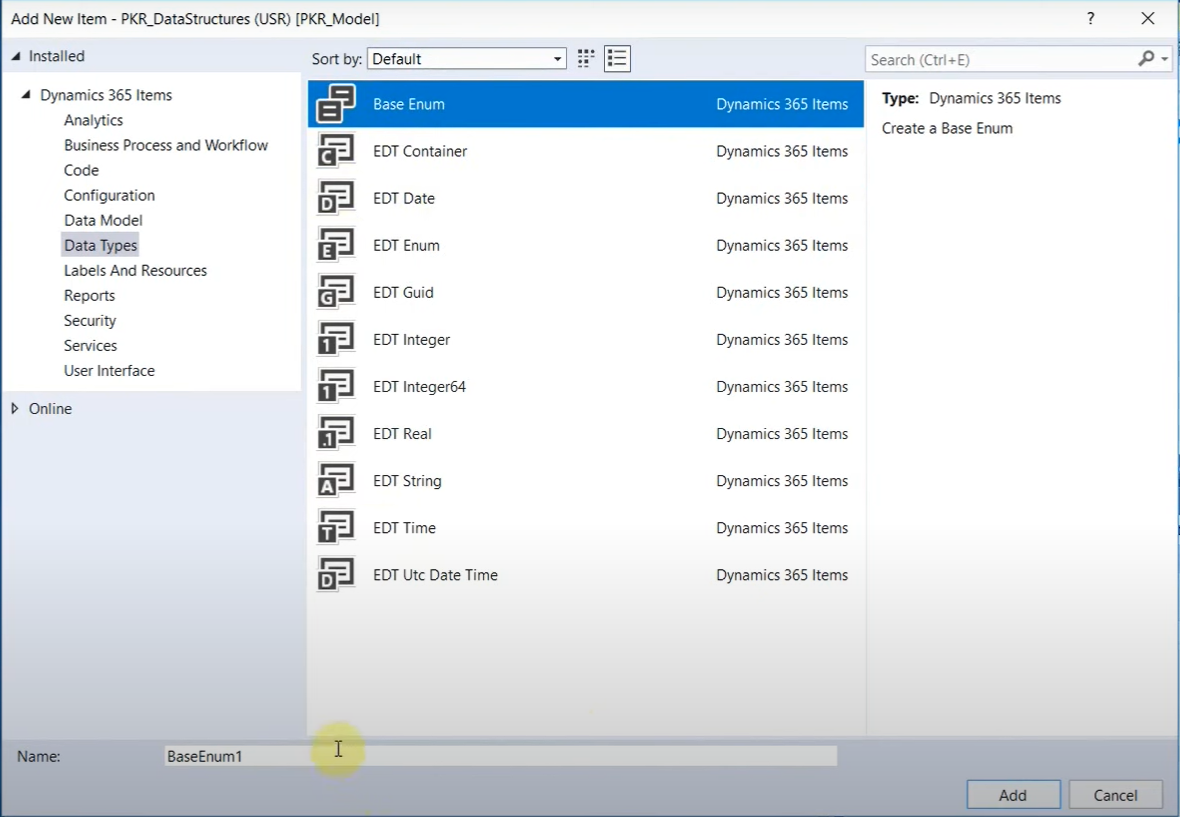Benefits of using EDTs - D365 F&O
Table of Content:
Benefits of using EDTs
We recommend that you use EDTs in development for many reasons.
-
Code is easier to read when you are using EDTs because the variables are named in a meaningful way. For example, you can declare a string variable to be called "Name" for a field where you want a user to enter a name in the user interface.
-
The properties that you set for an EDT are used by all instances of that type, which reduces work and promotes consistency. For example, account numbers (AccountNum data type) have the same properties throughout the system.
-
You can create hierarchies of EDTs, which inherit the properties that are appropriate from the parent and change the other properties. For example, the ItemCode EDT is used as the basis for the MarkupItemCode and PriceDiscItemCode EDTs. In the Properties window, if you leave the display length and style set to Auto for an EDT, finance and operations apps will make the best choice for how the EDT is displayed. This will make the EDT flexible throughout the system.
-
Most fields in the tables of finance and operations apps are based on EDTs. After the EDT is created, it can be reused as many times as it is needed in the application.
-
EDTs have various behaviors that you can use in your development. For example, EDTs can help enable lookup behavior on controls. You can also enable these controls to have drop-down lists and lookup capabilities for multiline string controls. To learn more about this capability, see Lookup controls.
Types of EDT
Below you can see all types of EDT.

Extended Data Types (EDTs) in Dynamics 365 Finance and Operations (D365 F&O) offers several benefits
Using Extended Data Types (EDTs) in Dynamics 365 Finance and Operations (D365 F&O) offers several benefits that contribute to better data management, code organization, and maintainability. Here are some key benefits:
-
Data Consistency: EDTs allow you to define a common data format, ensuring that the same data type and validation rules are used consistently throughout your application. This helps to maintain accurate and reliable data.
-
Code Reusability: By using EDTs, you can reuse the same data type definition across multiple tables, fields, and forms. This reduces redundancy in your codebase and simplifies maintenance.
-
Centralized Maintenance: If you need to make changes to a data type, you can update the EDT definition in one place, and the changes will automatically reflect wherever the EDT is used. This centralizes maintenance and reduces the chances of errors.
-
Validation and Formatting: EDTs allow you to define validation rules, such as data range checks and character limitations. They also enable you to format data consistently, ensuring that data entered adheres to predefined criteria.
-
User Experience: By using meaningful EDT names, you enhance the user experience. Users can understand the purpose and constraints of a field based on the associated EDT name, leading to more intuitive data entry.
-
Data Migration and Integration: When performing data migrations or integrations, EDTs provide a common reference for data types. This consistency streamlines the process and reduces mapping errors.
-
Future Enhancements: If you need to change the behavior or validation of a data type, modifying the EDT definition is often easier than updating every individual field that uses the same data type.
-
Documentation and Understanding: EDTs serve as a form of documentation, offering insights into the data type's purpose and usage. This helps developers understand how data should be handled within the application.
-
Enforced Conventions: Using EDTs enforces coding conventions and guidelines, making the codebase more consistent and easier for developers to follow.
-
Upgrade and Maintenance: When upgrading to newer versions of D365 F&O, having EDTs in place can simplify the process. Changes required due to platform updates can often be managed by adjusting the EDT definitions.
In summary, EDTs in D365 F&O provide a powerful way to maintain data consistency, streamline development efforts, and enhance the overall quality and maintainability of your application.